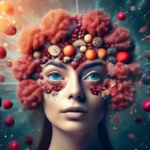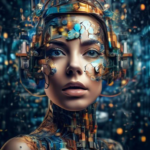In a world where imagination knows no bounds, the fusion of technology and creativity continues to revolutionize the way we experience the digital landscape. Picture this: a vibrant, dynamic app that doesn’t just serve utility but enchants with visuals that seem to come alive. Enter the realm of AI-generated images—a striking blend of art and algorithm, capable of turning abstract ideas into tangible, captivating imagery.
But how does one take these marvels of modern innovation and seamlessly integrate them into the heart of an application? Whether you’re a seasoned developer or a curious beginner, embarking on this journey might feel like stepping into uncharted territory. Fear not—we’re here to guide you through every twist and turn, ensuring that your app gets the visual flair it truly deserves. Welcome to the wonderland of AI-generated imagery and learn how to bring your digital creations to life with a sprinkle of algorithmic magic.
Table of Contents
- Understanding the Role of AI-Generated Images in Modern Apps
- Mapping Out Your Integration Strategy
- Selecting the Right AI Image Generation Platform
- Ensuring Seamless User Experience with AI-Generated Content
- Optimizing Image Quality and Resolution
- Managing Data Privacy and Security Concerns
- Scaling AI Integration for Growing App Demands
- Monitoring and Updating AI-Generated Images
- Harnessing User Feedback for Continuous Improvement
- Final Thoughts
Understanding the Role of AI-Generated Images in Modern Apps
AI-generated images are revolutionizing the way developers enrich modern applications. These images, created using algorithms, bring an unparalleled blend of creativity and automation, offering unique possibilities for user experience and engagement. Integrating them into apps not only enhances visual appeal but also adds a dynamic, user-centric element.
**Benefits of Incorporating AI-Generated Images:**
- **Enhanced Personalization**: Tailor visual content to fit individual user preferences and behaviors.
- **Cost Efficiency**: Reduce the need for extensive design resources and stock image purchases.
- **Rapid Production**: Generate images quickly to keep up with fast-paced development timelines.
- **Scalability**: Effortlessly adapt image creation to match app growth and user base expansion.
| Feature | Traditional Images | AI-Generated Images |
|---|---|---|
| Creation Time | Lengthy | Instant |
| Customization | Limited | High |
| Cost | Expensive | Cost-effective |
To seamlessly blend AI-generated images into your app, consider using APIs provided by platforms like OpenAI or DeepArt. These robust tools offer fine-tuned control over image output, ensuring that the generated visuals align perfectly with your app’s aesthetic and functional requirements.
**Tips for Effective Integration:**
- **Consistency**: Ensure the AI-generated images align with the overall design language of your app.
- **User Feedback**: Regularly collect and analyze user feedback to refine image generation parameters.
- **Performance**: Optimize image size and format to maintain app responsiveness and performance.
Mapping Out Your Integration Strategy
Creating a well-defined strategy to integrate AI-generated images into your app will streamline the development process and ensure optimal results. Start by identifying key objectives. Do you aim to enhance user experience, improve personalization, or perhaps create entirely new functionalities? Whatever the goal, a clear definition will guide you in selecting the right tools and technologies.
Next, you’ll need to choose suitable AI image generation platforms. The market offers several options, each with unique features and pricing. Consider:
- Stability: Ensuring the platform reliably produces high-quality images.
- Scalability: Can it handle an increasing number of requests?
- API Integration: How easily can it communicate with your existing app infrastructure?
- Cost-effectiveness: Does the pricing fit within your budget constraints?
To further refine your strategy, consider the following implementation stages:
| Stage | Activity |
|---|---|
| Planning | Outline objectives, select tools, and define KPIs. |
| Development | Integrate APIs, develop backend logic, and create user interfaces. |
| Testing | Conduct user acceptance testing and iterate based on feedback. |
| Deployment | Roll out the updates, monitor performance, and initiate user training. |
Don’t forget to work out the data flow and how the AI-generated images will be served to your users. For example, will the images be generated on-demand, stored in a database, or cached for quicker user access? Efficient data handling not only boosts performance but also enhances the user experience.
Lastly, ensure continuous evaluation of the system. Analytics tools can help monitor usage patterns, user feedback, and system performance. This data is invaluable for ongoing improvements, allowing you to tweak the integration for better results. After all, a well-implemented integration strategy is one that evolves with the needs of its users.
Selecting the Right AI Image Generation Platform
When it comes to integrating AI-generated images into your app, choosing the right platform can make a significant difference. With numerous options available, it’s crucial to consider a few key factors to ensure you select the best fit for your needs.
**Key Factors to Consider**:
- Quality and Realism: Look for platforms known for producing high-quality, realistic images that can seamlessly blend with your app’s visual style. User reviews and portfolio showcases can provide valuable insights.
- Ease of Integration: The platform should offer APIs or SDKs that are easy to integrate with your app. Clear documentation and robust support can significantly reduce development time.
- Customization Options: The ability to fine-tune parameters and guide the image generation process is essential. This allows for more creative control and better alignment with your app’s branding.
- Cost: Evaluate both the pricing structure and the scalability. Ensure that the platform aligns with your budget, especially if you anticipate high volumes of image generation.
Here’s a comparison of some popular AI image generation platforms:
| Platform | Quality | Ease of Use | Cost |
|---|---|---|---|
| Dall-E | High | Moderate | Premium |
| MidJourney | Very High | Easy | Moderate |
| Stable Diffusion | Moderate | Moderate | Free |
**Experiment and Iterate**: It’s often beneficial to test a few different platforms before making a final decision. This allows you to compare the ease of integration, the quality of generated images, and the overall user experience. A/B testing with your target audience can also provide critical feedback on which platform generates the most engaging and effective images.
Remember, the right choice depends not only on the technical specifications but also on how well the platform aligns with your creative vision and app functionality. Take the time to explore all available options to ensure that your AI-generated images enhance user engagement and overall app success.
Ensuring Seamless User Experience with AI-Generated Content
Integrating AI-generated images into your applications doesn’t just elevate the visual appeal; it significantly enhances user engagement. Creating a seamless interface where these images fit harmoniously requires thoughtful planning and execution. Here’s how you can ensure your users enjoy a flawless experience.
**Intuitive Design Alignment:** Ensuring the AI-generated images blend seamlessly with your app design is key. Here are a few strategies:
- Color Consistency: Use AI-generated images that complement your app’s color palette.
- Resolution Matching: Align image resolution with various screen sizes for a crisp display across devices.
- Style Uniformity: Maintain a uniform image style that resonates with your app’s theme and user expectations.
**User-Centric Image Rendering:** Enhancing user experience can be further achieved by dynamic image rendering. This approach adjusts the displayed content based on user behavior and preferences. Consider these points:
- Personalization: Showcase images that align with individual user preferences and past interactions.
- Contextual Relevance: Dynamically alter images based on the context and location within the app.
- Loading Speed: Optimize the loading time of images to prevent disruption in user experience.
| Feature | Description |
|---|---|
| Color Consistency | Ensuring images match the app’s color scheme. |
| Dynamic Rendering | Adjusting images based on user behavior and context. |
| Loading Speed | Optimizing images for quick loading times. |
**Accessibility and Inclusivity:** It’s crucial to ensure that AI-generated images are accessible to all users, including those with disabilities. Implementing alt text for all images and ensuring screen readers can interpret these visuals is essential. Additionally:
- Contrast Ratio: High contrast images to aid users with visual impairments.
- Responsive Images: Images that adapt to various screen readers and assistive technologies.
- User Testing: Regularly test your app to ensure accessibility standards are met and maintained.
Optimizing Image Quality and Resolution
When working with AI-generated images, ensuring top-notch quality and optimal resolution is paramount. The factors that influence image quality encompass everything from the resolution at which the image is generated to the algorithms used for enhancement. **Attention to detail** can help you integrate images seamlessly into your app, providing users with a delightful visual experience.
Firstly, always aim to generate images at higher resolutions if possible. It’s easier to downscale than upscale without losing quality. Use image enhancement APIs that incorporate **deep learning algorithms** to refine and upscale images. These APIs often use techniques that understand the content and context of an image, resulting in fewer artifacts and sharper details. Popular choices include **Topaz Labs** and **Let’s Enhance**.
- Prefer TIFF or PNG formats for lossless quality.
- Use JPEG with maximum quality settings when necessary for smaller file sizes.
- Maintain aspect ratio to prevent image distortion.
Another critical consideration is the color profile. AI-generated images can sometimes have shifted color tones. Employ color correction tools to ensure consistency with your app’s existing visual assets. Tools like **Adobe Photoshop** and **GIMP** offer advanced features for color adjustment, ensuring that your images are vibrant and accurate.
| Tool | Function |
|---|---|
| Topaz Labs | Image Enhancement |
| Let’s Enhance | Upscaling Images |
| Adobe Photoshop | Color Correction |
| GIMP | Color Adjustment |
Smoothing sharp edges and reducing noise also constitute integral parts of optimizing image quality. Leveraging AI tools that specialize in noise reduction can make a significant difference. Ensure that the resultant images are not overly smooth or plasticky, maintaining natural texture and details. This balance ensures a pleasant user experience.
Ultimately, the goal is to use tools and techniques that not only enhance the visual quality of the images but also ensure they blend harmoniously within your application’s aesthetics. This approach fosters a cohesive and professional appearance, making your app more appealing and engaging for users.
Managing Data Privacy and Security Concerns
Integrating AI-generated images into your applications brings an array of opportunities, but it also ushers in data privacy and security considerations that are paramount to address. Ensuring users’ data is handled responsibly promotes trust and compliance with regulations such as GDPR. One of the first steps is to decide whether the image generation occurs client-side or server-side, each with its privacy implications.
**Client-side generation** typically means users’ data remains on their devices, minimizing privacy risks. However, this approach can pose challenges related to computational resources and the app’s performance. In contrast, **server-side image generation** can leverage more powerful servers but requires robust data encryption protocols to safeguard the transmission and storage of personal data. Here are some practices to consider:
- Use secure communication protocols (e.g., HTTPS) for data transmissions.
- Implement data encryption both in transit and at rest.
- Adopt anonymization techniques to strip out personal identifiers from the datasets.
**User Consent and Transparency** are also critical. Clearly inform users about the data being collected, how it will be used, and obtain explicit consent. Transparent data usage policies foster user trust and legal compliance. Displaying a privacy policy and data usage consent form during the onboarding process can be highly effective.
| Security Feature | Client-side | Server-side |
|---|---|---|
| Encryption Needs | Lower | Higher |
| Data Transmission | Minimal | Significant |
| Privacy Risks | Reduced | Elevated |
**enforcing access controls and audit trails** is imperative. Ensure that only authorized personnel have access to the data, and maintain logs to monitor any unauthorized access attempts. Regular audits and security assessments help in identifying and mitigating potential vulnerabilities.
Scaling AI Integration for Growing App Demands
As your app scales to meet increasing user demands, seamlessly integrating AI-generated images efficiently and effectively becomes crucial. Firstly, consider adopting a **modular approach**. By isolating the AI components as individual modules, you can manage and update them independently of your core applications, making it easier to scale without extensive reconfiguration.
Next, leverage **cloud computing platforms** for real-time processing and storage. Platforms like AWS, Google Cloud, and Microsoft Azure offer scalable solutions that adjust to your app’s load, ensuring high availability and speed. Here’s what you might find beneficial:
- **Auto-scaling groups** to automatically adjust the number of instances based on demand.
- **Serverless functions** that trigger image generation processes without traditional server management.
- **CDN (Content Delivery Networks)** to rapidly deliver images globally, reducing latency.
In addition, utilize **batch processing** for non-urgent image generation requests. By grouping multiple tasks to be processed together, you can optimize resource utilization. This is particularly useful for background tasks that are not time-sensitive.
A potential setup for managing these tasks might include:
| Task Type | Processing Method |
|---|---|
| Immediate User Requests | Real-time Processing |
| Background Tasks | Batch Processing |
To streamline your development process, consider **using APIs** that facilitate AI integration. Providers like OpenAI and DeepAI offer APIs designed for seamless integration, ensuring you can incorporate advanced AI functionalities without reinventing the wheel. These APIs often come with documentation and support, aiding your development team in swift implementation.
Monitoring and Updating AI-Generated Images
Ensuring the quality and relevance of AI-generated images in your app involves consistent monitoring and updates. To do this effectively, implement a robust strategy that includes periodical checks, user feedback mechanisms, and automated system alerts. By addressing these elements, you can maintain high standards and meet user expectations.
**Key Monitoring Practices**:
- Automated System Alerts: Integrate machine learning tools that can flag any inconsistencies or quality issues in generated images. These tools can be configured to notify your development team immediately, allowing for quick adjustments.
- User Feedback Collection: Include features in your app that allow users to report issues or suggest improvements for AI-generated images. This can be achieved through simple rating systems, comment sections, or detailed feedback forms.
- Routine Manual Reviews: Schedule regular manual checks performed by your quality assurance team. They can review batches of generated images to ensure they meet the set criteria and are fitting the intended context.
**Updating Procedures** are equally important to keep the generated content fresh and accurate. Implement strategies such as:
- Periodic Re-training of AI Models: AI models require up-to-date data to produce relevant images. Continuously feed them with new training data collected from your app usage and other relevant sources.
- Version Control Systems: Use version control systems to manage updates and rollbacks efficiently. This way, you can quickly revert to previous versions if a new update causes unforeseen issues.
| Monitoring Tool | Purpose |
|---|---|
| QA Automation | Automated system alerts for inconsistencies |
| User Feedback Widgets | Collect insights and issues reported by users |
| Manual Review Schedule | Routine checks by quality assurance team |
Incorporate these strategies into a unified dashboard that centralizes error reporting, user feedback, and manual review outcomes. This provides a comprehensive overview and streamlines the decision-making process for updates and improvements. Your development team can then prioritize tasks and efficiently address any issues, ensuring that the AI-generated images continually enhance user experience.
stay informed about the latest advancements in AI and related technologies to keep your app ahead of the competition. Enhanced models and innovative tools emerge regularly, offering new capabilities and improved performance. Being proactive in adapting these advancements ensures that your app remains a top choice for users who value cutting-edge functionalities.
Harnessing User Feedback for Continuous Improvement
Incorporating user feedback into the development cycle is crucial when integrating AI-generated images into apps. By listening closely to users, developers can make informed decisions that improve both the functionality and user experience of the app. Below are some effective strategies:
- Feedback Channels: Utilize multiple platforms—such as email, social media, and in-app surveys—to gather user insights.
- Segmentation: Identify key user demographics and segment feedback to understand which features resonate with different user groups.
- Usability Testing: Conduct regular usability tests to observe how real users interact with AI-generated images within your app.
Analyzing this data can reveal patterns and common pain points, guiding you to prioritize fixes and feature enhancements effectively. Consider implementing the following practices:
| Feedback Source | Advantages |
|---|---|
| In-app Surveys | Immediate, relevant insights |
| Social Media | Broad user reach |
| Email Feedback | Detailed, personalized responses |
Another effective way to harness user feedback is through Beta Testing Groups. By providing early access to select users, you can receive detailed, real-world insights into how AI-generated images perform within the app. Beta testers often provide invaluable suggestions for enhancements and catch bugs that might have gone unnoticed in a closed testing environment.
Lastly, don’t forget the power of community forums and discussion boards. Encouraging users to share their experiences and suggestions in a communal space not only gives you direct access to their thoughts but also fosters a sense of community and ownership among your user base. This can lead to more engaged users and ultimately, a better app.
Final Thoughts
incorporating AI-generated images into your apps can truly elevate your user experience to the next level. By following the steps outlined in this article, you can take advantage of the endless possibilities that AI has to offer and create visually stunning and engaging content for your users. So go ahead, experiment, and innovate with AI-generated images – the future of app development is in your hands! Thank you for reading, and happy creating!































